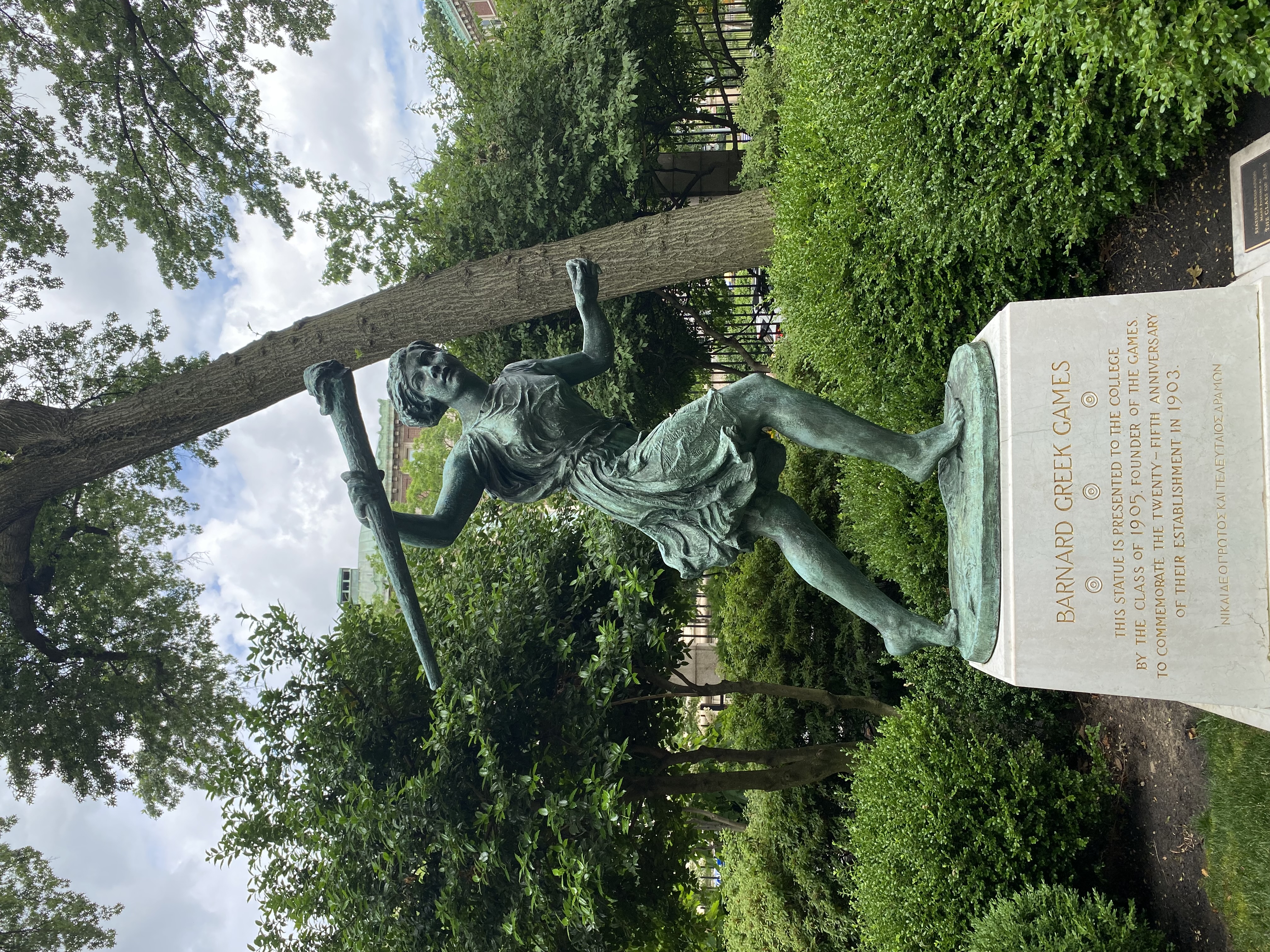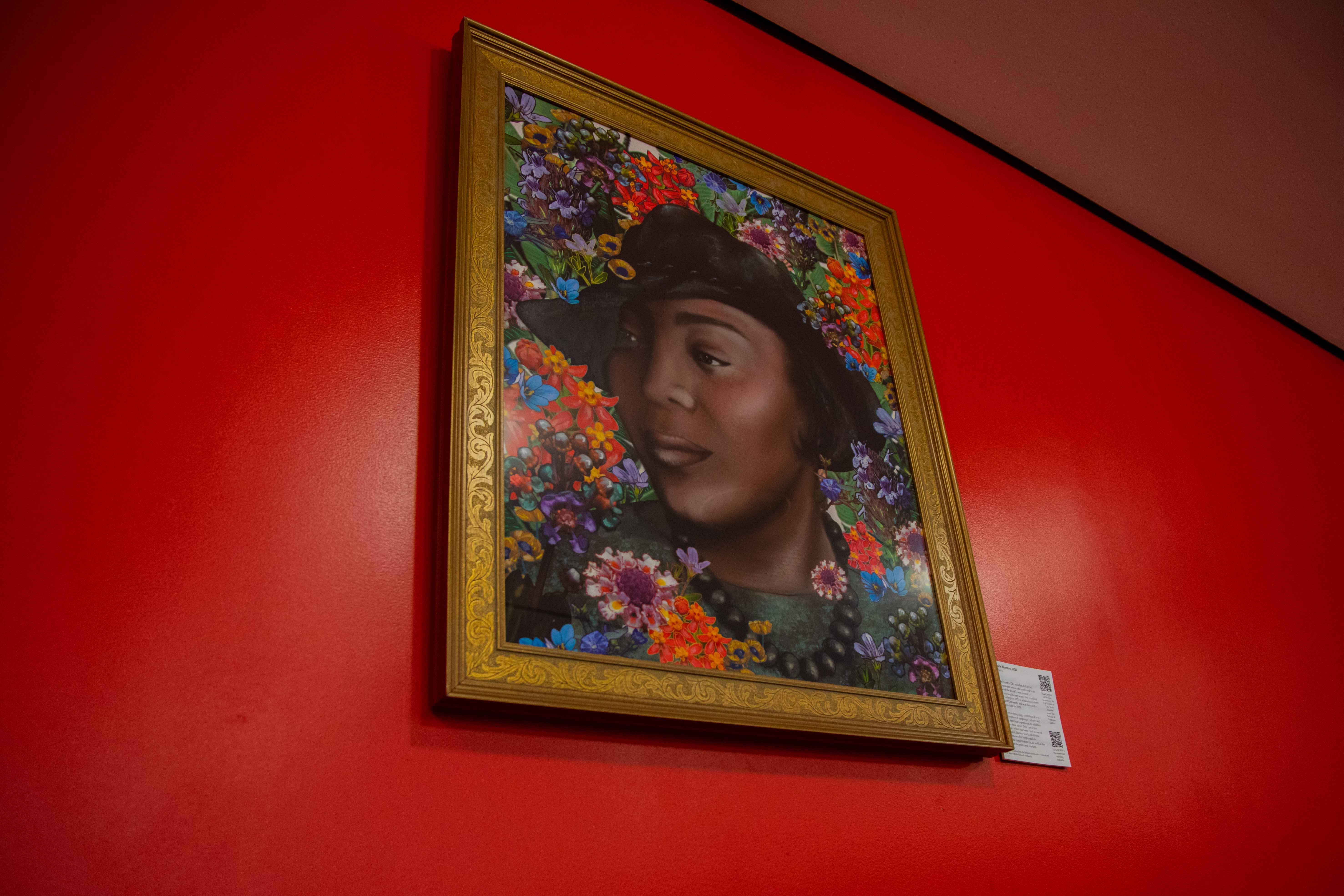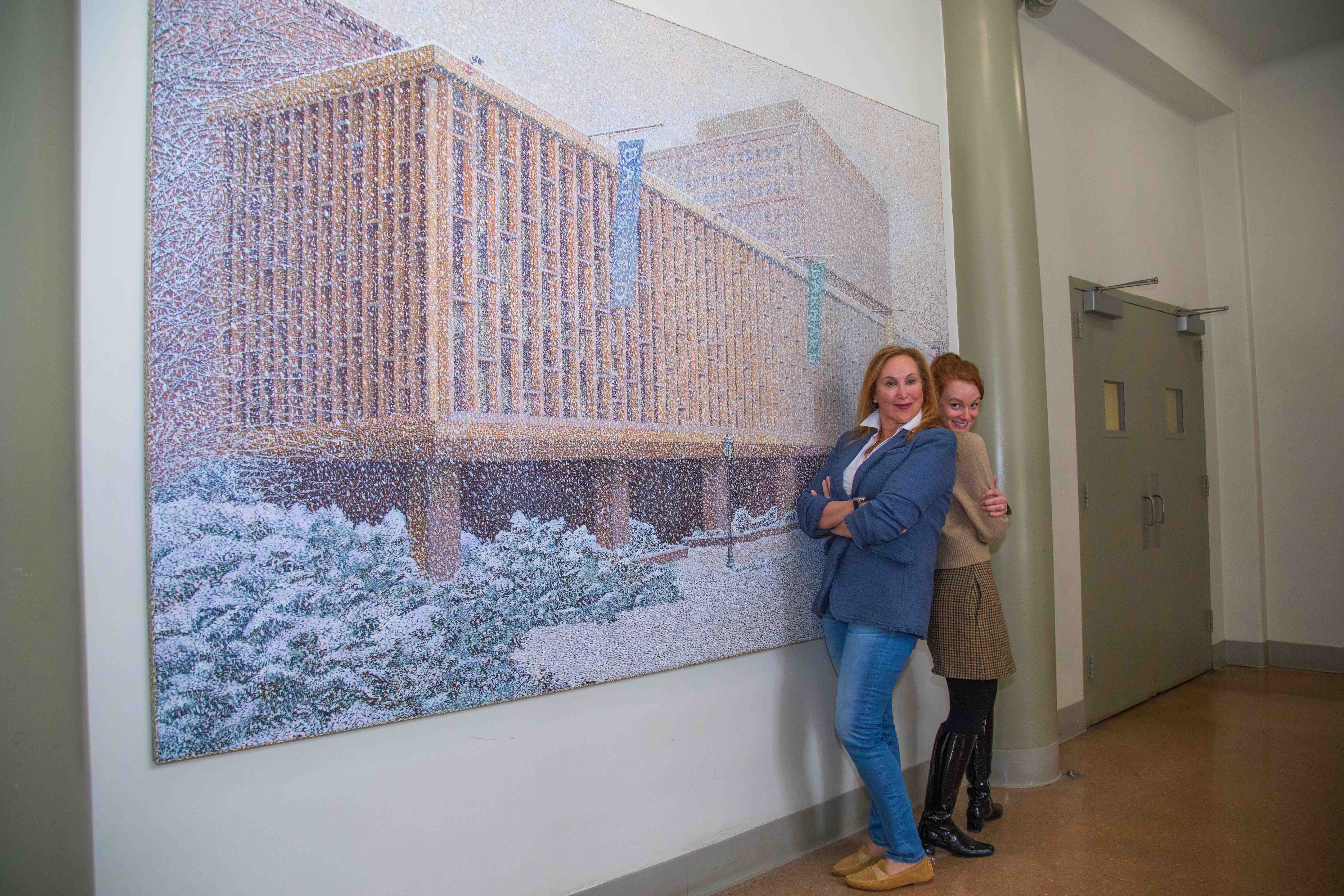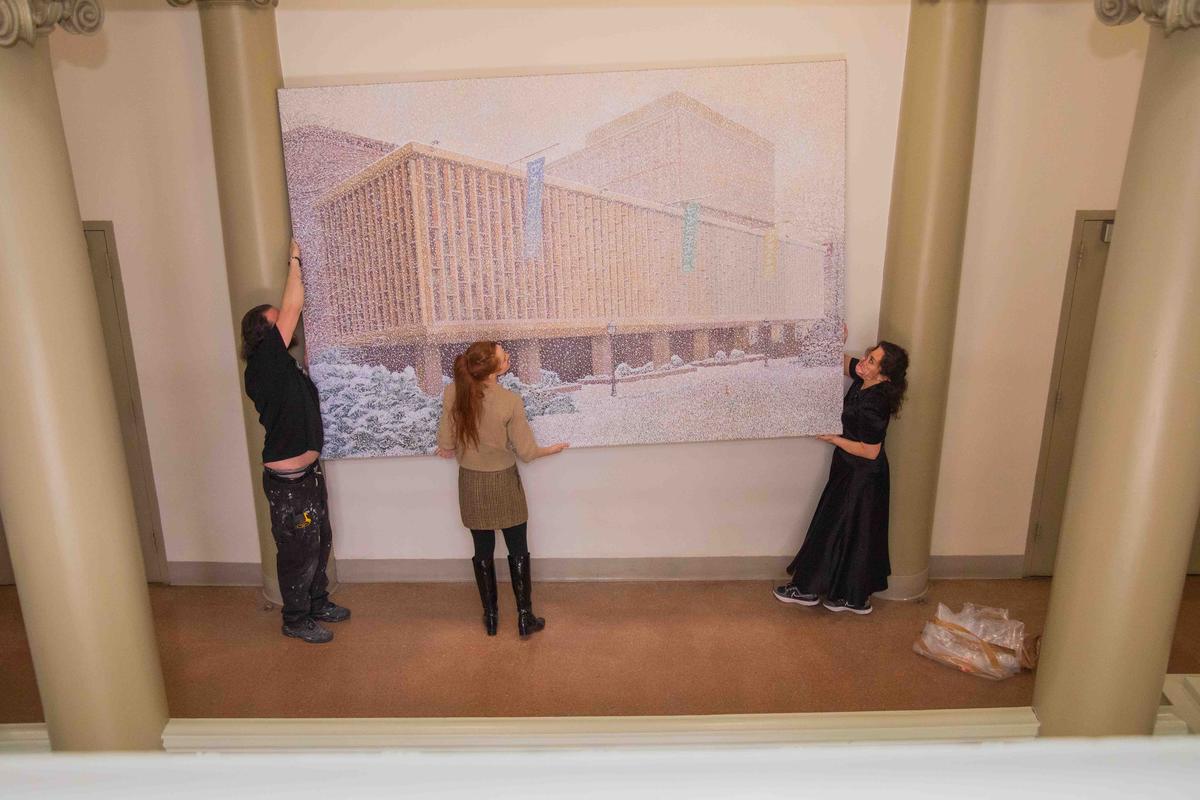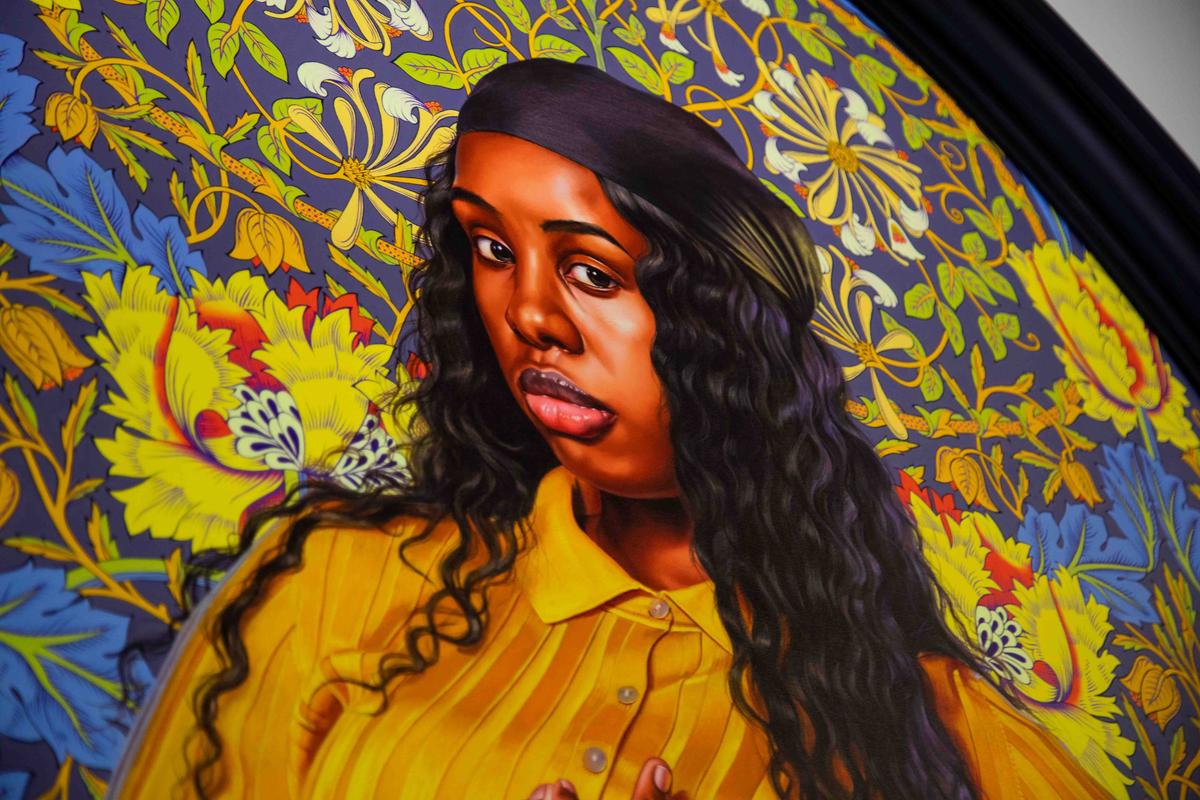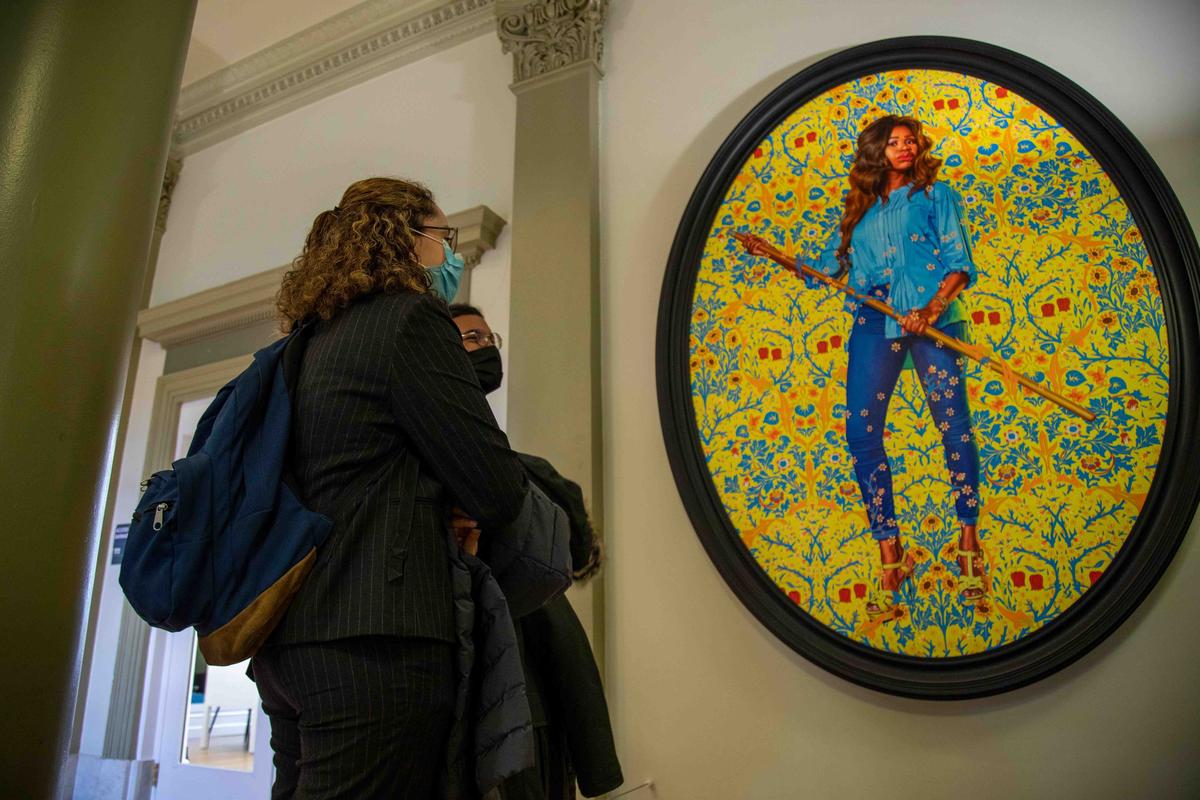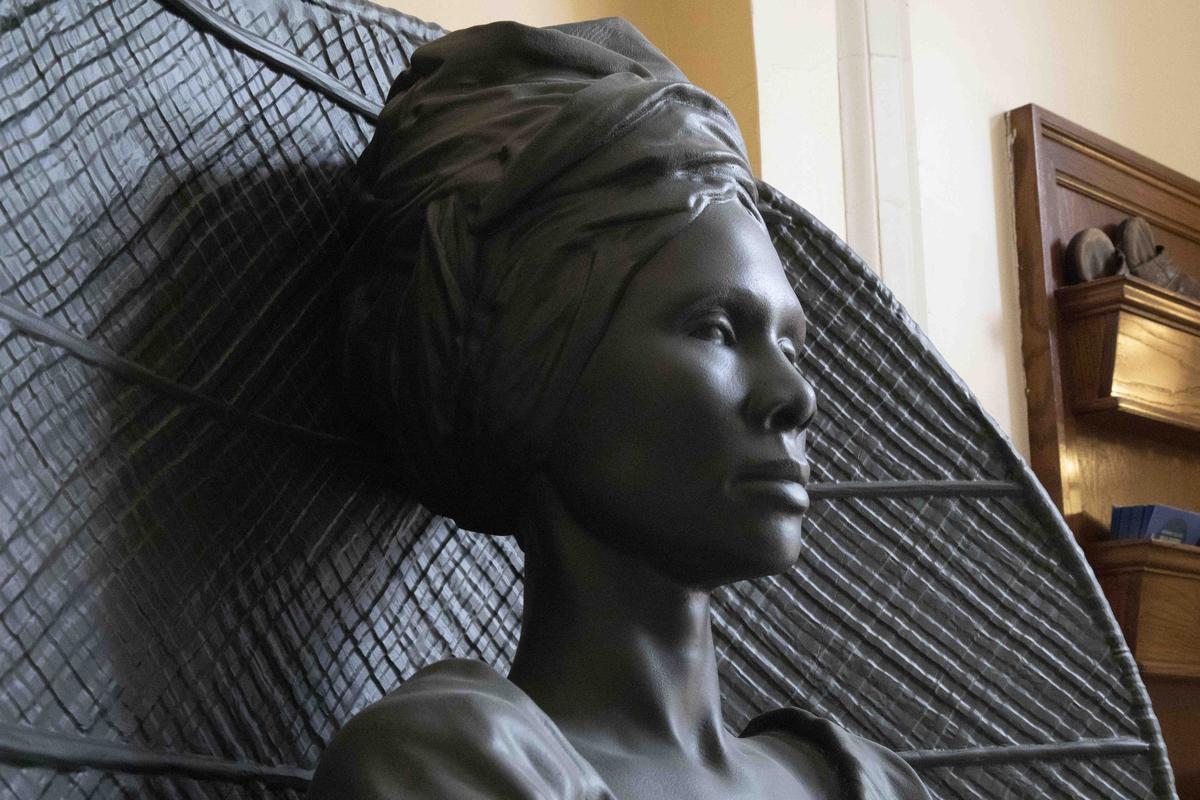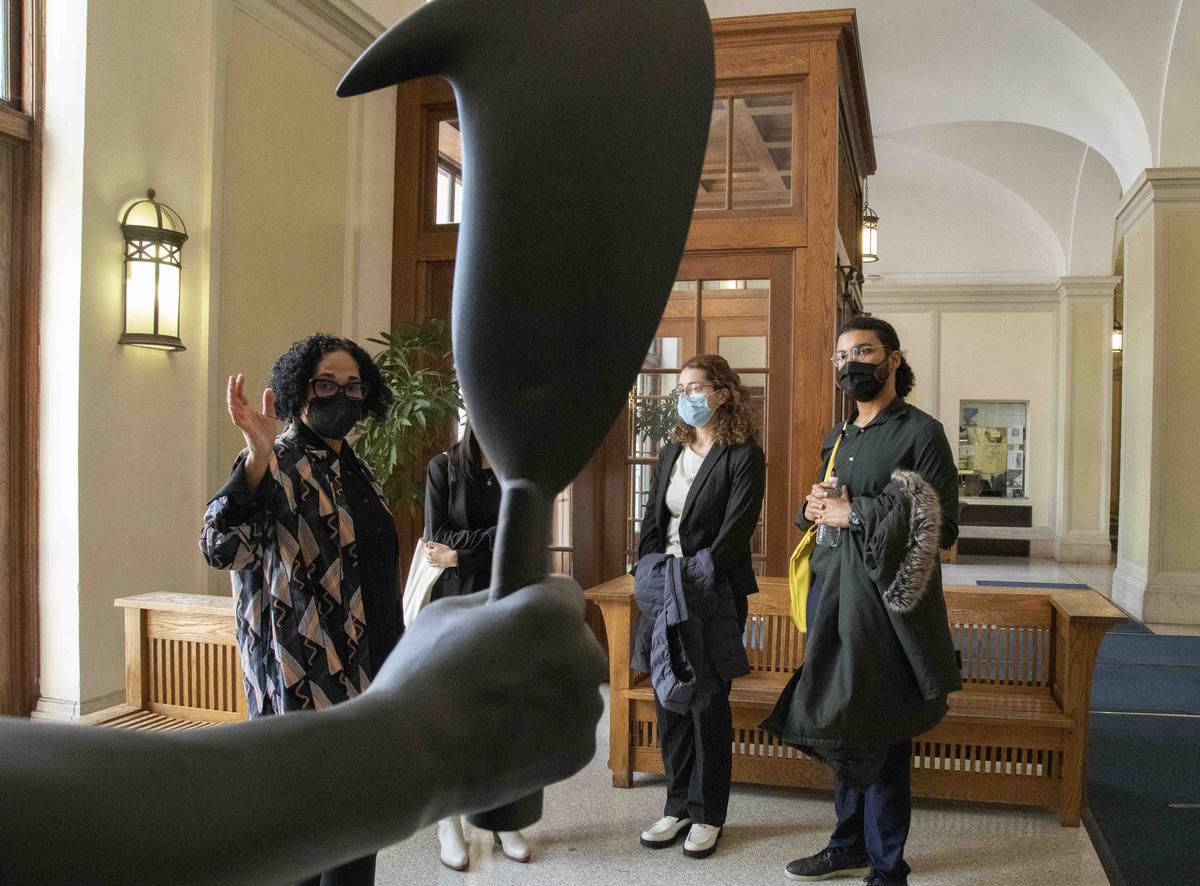When visitors and community members wind their way through Barnard’s campus, they will see a diverse array of artwork: larger-than-life oil paintings in the Milstein Center, a vibrant alumna portrait in the Diana Center, and an eye-catching sculpture in Barnard Hall. Over time, certain works have become part of the fabric of campus, like the 1928 Greek Games statue at the edge of Futter Field. Others, such as the painting Lehman Hall in Milbank Hall, are more recent additions. Regardless of their pathway to the College, all are meant to spark conversation, invoke wonder and curiosity, and, of course, educate.
With some pieces displayed prominently and others tucked away in more discreet locations, it helps to know where to look. Discover the artworks on campus, from the historic to the newest, and where to find them, below.
Spirit of the Greek Games
Artist: Chester Beach
Location: The edge of Futter Field, by Barnard Hall
The Spirit of the Greek Games statue, also known as the “Torch Bearer,” is an oft-photographed op on campus, but where exactly did it come from? In 1903, Barnard launched the Greek Games, an annual competition between the first-year and sophomore classes that judged athletics, lyrics, costumes, music, and dance. A central part of campus life, the games took place from 1903 to 1968 and were later revived in a new format in the 2000s for a limited time. The “Torch Bearer” was given to Barnard by the Class of 1905, the founders of the Greek Games, to commemorate the 25th anniversary of the games.
I Am Queen Mary
Artists: La Vaughn Belle and Jeannette Ehlers
Location: Lobby of Barnard Hall
The replicated monument I Am Queen Mary — on long-term loan from artists Belle and Ehlers, Lisa Kim ’96, and the Ford Foundation — arrived at the College in fall 2019. The sculpture features an allegorical representation of Mary Thomas (Queen Mary), one of the four female leaders of the 1878 Fireburn labor revolt on St. Croix. The revolt was in protest of the contractual servitude and abusive labor conditions workers faced for decades after slavery had been abolished. Situated in one of the central hubs of campus, the main entryway and lobby of Barnard Hall, the sculpture is intended to ignite dialogues about public art, representations of Black women, and the impacts of colonialism and slavery.
Zora Neale Hurston, 2020
Artist: Chinon Maria
Location: Diana Center Lower Level, outside of the Event Oval
On loan from alumna Kathryn Boberg ’09, Zora Neale Hurston, 2020 portrays the acclaimed novelist, folklorist, and anthropologist who was a central figure in the Harlem Renaissance. Hurston transferred to Barnard College from Howard University in 1925 and made history as Barnard’s first Black graduate in 1928. Her masterpiece novel, Their Eyes Were Watching God, is included in PBS’s “Great American Reads” list and Time Magazine's All-Time 100 Novels. The colorful portrayal of Hurston, hanging in the lower level of the Diana Center, was created by artist Chinon Maria, who is known for threading feminist narratives throughout her works.
Portrait of Dorinda Essah and Portrait of Savannah Essah
Artist: Kehinde Wiley
Location: Milbank Hall, outside of Access Barnard
In January 2021, Barnard welcomed the installation of two paintings outside of the Access Barnard office entrance. The oil-on-canvas works feature a mother (Dorinda Essah) and her daughter (Savannah Essah), dressed in contemporary clothing, against the backdrop of Morris & Co.’s iconic wallpaper designs. They belong to a series of six paintings from the William Morris Gallery exhibit “Kehinde Wiley: The Yellow Wallpaper.” For all who visit Milbank Hall, Barnard’s historic first building, Wiley’s larger-than-life paintings will be the first thing they see.
Weecha
Artist: Henry Richardson
Location: Formerly between the Diana Center and Altschul Hall
Weecha, brought to campus via a collaboration with Professor Joan Snitzer, director of the visual arts program in the Department of Art History, was on loan to the College from August 2021 to August 2022 to coincide with the yearlong celebration of the Barnard Year of Science. The 8-foot tall, 800-pound glass sculpture was created by Henry Richardson as an homage to his thesis advisor and professor at Bryn Mawr, Maria Luisa “Weecha” Crawford, an expert in the fields of geology and petrology.
Lehman Hall
Artist: Cynthia Talmadge
Location: Milbank Hall, 2nd floor staircase landing
Arriving in May 2022 via an anonymous loan, this new addition to the College is a look back in time at an older footprint of Barnard’s campus. As many Barnard alumnae from the Class of 2020 and earlier will recall, Lehman Hall was the building that housed the library before the Milstein Center for Teaching and Learning was finished in 2018. The painting is a part of Talmadge’s Seven Sisters series — a collection of pointillist paintings depicting Brutalist architecture on the Seven Sisters’ campuses (Barnard College, Bryn Mawr College, Mount Holyoke College, Radcliffe College, Smith College, Wellesley College, and Vassar College) in snowfall.
